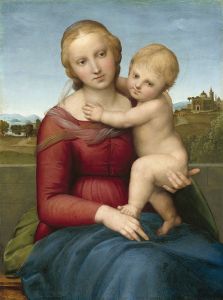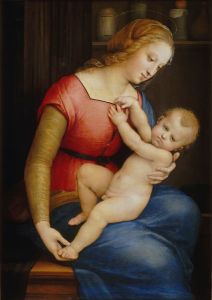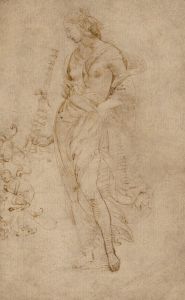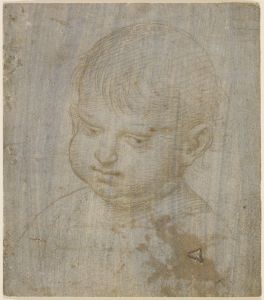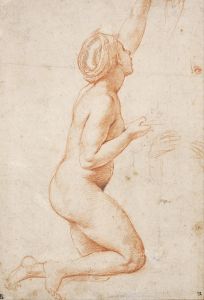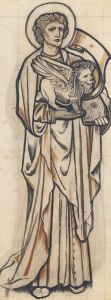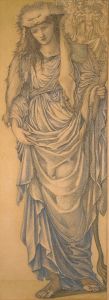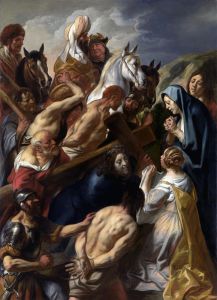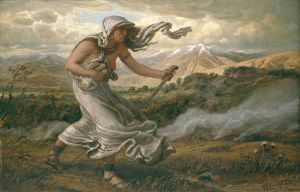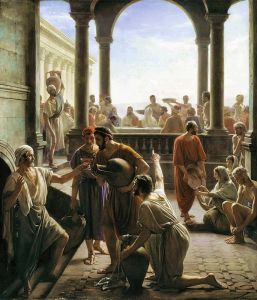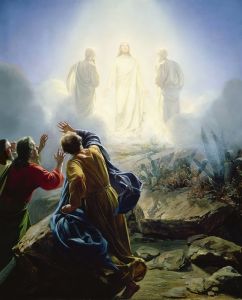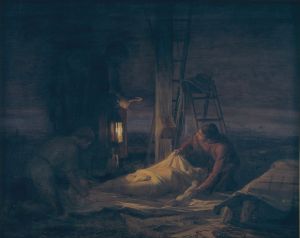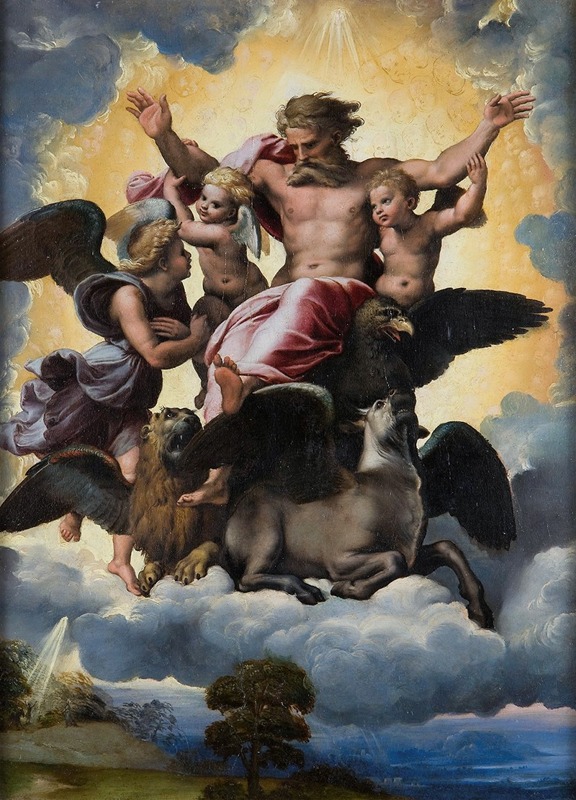
Ezekiel’s Vision
A hand-painted replica of Raphael’s masterpiece Ezekiel’s Vision, meticulously crafted by professional artists to capture the true essence of the original. Each piece is created with museum-quality canvas and rare mineral pigments, carefully painted by experienced artists with delicate brushstrokes and rich, layered colors to perfectly recreate the texture of the original artwork. Unlike machine-printed reproductions, this hand-painted version brings the painting to life, infused with the artist’s emotions and skill in every stroke. Whether for personal collection or home decoration, it instantly elevates the artistic atmosphere of any space.
Ezekiel's Vision is a painting by the renowned Italian Renaissance artist Raphael, created around 1518. This artwork is a significant example of Raphael's mastery in religious themes and his ability to convey complex theological concepts through visual art. The painting is currently housed in the Palatine Gallery of the Palazzo Pitti in Florence, Italy.
The painting depicts a scene from the Old Testament, specifically from the Book of Ezekiel, where the prophet Ezekiel experiences a divine vision. In this vision, Ezekiel sees God riding on a chariot, supported by four cherubim, each with four faces and four wings. This imagery is a representation of the divine presence and the majesty of God as described in Ezekiel 1:4-28. Raphael's interpretation of this biblical scene is both dramatic and serene, capturing the awe-inspiring nature of the vision.
Raphael's composition is notable for its dynamic use of space and movement. The central figure of God is depicted with a sense of power and authority, surrounded by a luminous aura that emphasizes his divine nature. The cherubim are intricately detailed, showcasing Raphael's skill in rendering complex forms and his deep understanding of human anatomy, even when applied to celestial beings. The use of light and shadow in the painting enhances the mystical atmosphere, drawing the viewer's attention to the central figures and creating a sense of depth and dimensionality.
The color palette of Ezekiel's Vision is rich and vibrant, characteristic of Raphael's work during this period. The use of gold and deep blues and reds adds to the painting's regal and otherworldly quality. Raphael's ability to balance color and form is evident in the harmonious composition, which guides the viewer's eye across the canvas and highlights the narrative elements of the scene.
Ezekiel's Vision is a testament to Raphael's ability to blend classical techniques with innovative approaches to storytelling in art. His work during this period was heavily influenced by his contemporaries, including Michelangelo and Leonardo da Vinci, yet Raphael managed to develop a distinct style that set him apart. This painting is an example of his mature style, where he successfully integrates the ideals of the High Renaissance with his unique artistic vision.
The painting's provenance is well-documented, having been part of several prominent collections before finding its home in the Palazzo Pitti. It has been the subject of numerous art historical studies, which have explored its theological significance, artistic techniques, and its place within Raphael's oeuvre.
Ezekiel's Vision remains an important work for both its artistic merit and its contribution to the understanding of religious art during the Renaissance. It continues to be admired by art historians and enthusiasts alike for its technical brilliance and its ability to convey profound spiritual themes through the medium of painting.





